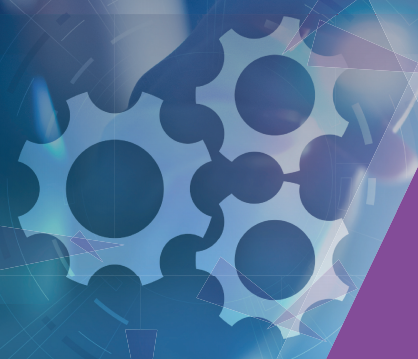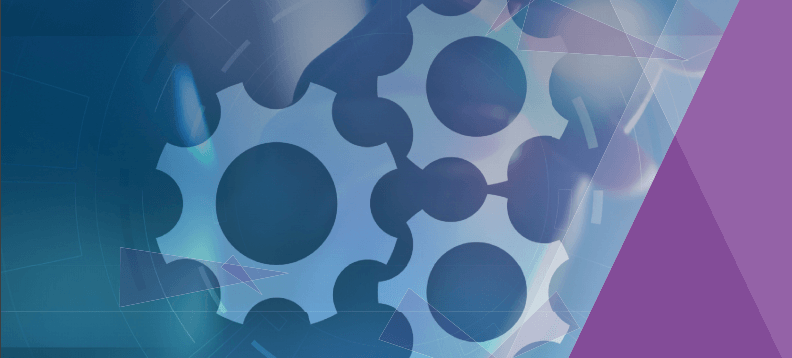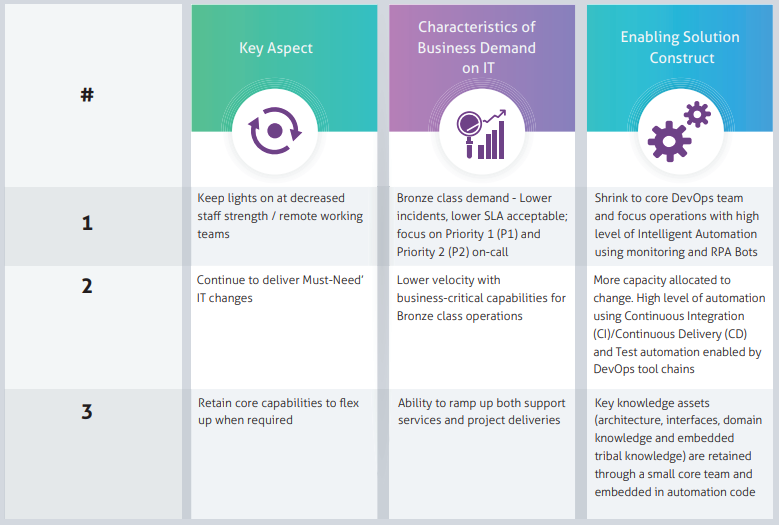Accelerating DevOps Adoption through a Composable Automation Solution for Enterprises to Reduce Costs and Improve Time-to-market
Summary
The current situation has forced a different paradigm on business. Demand has moved from ‘wants’ to ‘needs,’ retailers are temporarily discouraging footfalls, logistics networks have been strained due to lack of staff, forcing delivery timelines running into weeks, and e-comm players are accepting orders only for essentials. Here’s a text received by customers of a large telecom business in the UK:
Similarly, a leading retail bank communicated the below to its customers.
We’re protecting our colleagues and customers
- In stores we’re prioritizing serving our elderly or vulnerable customers - we recommend coming in when we first open in the morning
- We’re making sure customers know they can use our self-service digital channels to do their banking
- We’ve temporarily changed our store opening hours to limit contact - all stores will open Monday to Friday 10am - 4pm and will be closed at weekends for now
- We are encouraging customers not to visit unless it’s absolutely necessary, and have put social distancing in place across all the stores
- To help us prioritize those who need us most, please only call our contact center if you have an urgent question or problem
- From 1 April, our contactless card payment limit will go up to £45. So you can avoid having to enter your PIN
While this disruptive phase is expected to be short term, the ramifications are driving future business models. Businesses will innovate and create new operating models and capabilities, which could impact several industry segments e.g. retailers will invest in shared outbound logistics infrastructure, banks will create capabilities for dynamic changes to loan repayments without impacting non-performing assets and provisioning, and large e-comm players will strengthen their essentials and grocery business. Digitization and virtual interface will help drive new business products and straight-through business processes with minimal human intervention. Moreover, all these product and operating parameter changes may need to be made while staff shortage is the norm.
In a nutshell, the new business paradigm will be based on three different operating standards – Gold (normal business environment), Silver (business environment on caution) and Bronze (stressed business environment with bare essential customer service). This shift is expected to be incorporated into Business Continuity Plans of tomorrow. The above scenario has a non-trivial implication on IT. IT organizations will be expected to mimic business operating standards. Unfortunately, IT organizations are ill-prepared for this new operating paradigm. The challenges faced by IT teams are:
- Keeping the current business running on shoestring staffing &/or budgets
- Enabling the business to move to a new operating paradigm (Gold/Silver/Bronze class)
- IT organizations themselves transforming to the new Gold/Silver/Bronze operating model
Moreover, these transformations are to be carried out when we face the aftermath of unprecedented headwinds with cuts in both Opex and Capex.
While IT delivery models have evolved recently to support Digital initiatives, they were intended to essentially solve problems of speed and agility. In our view, these innovations of IT delivery are ideal solutions for the new IT operating paradigm ‘Elastic IT’ (Elastic IT is the capability to operate in different service classes (Gold/Silver/Bronze) with varying availability of IT and business operations staff). This new paradigm will require retaining/preserving core IT capabilities (like application business capabilities and underlying architecture) for instantaneous ramp-up when the situation improves, while ensuring that multiple cost take out initiatives are delivered at the same time.
The DevOps delivery model with slight tweaks and tools can help solve the three main problems to enable Elastic IT
In this whitepaper, we have outlined how we see the DevOps solution evolving to enable and sustain a dynamic and elastic business operating model.
Reducing costs and improving throughput with Accelerated DevOps
Mindtree helps drive the objective of ‘Elastic IT’ by enabling key applications, while support personnel are retained and effective, even though working remotely, using accelerated DevOps service delivery. The adoption of DevOps in normal times has faced friction due to structural and people issues. We believe this friction is greatly reduced in the current context and needs infusion of automation and Dev to Ops toolchain integration. This enables us to fast track DevOps adoption using our CAPE™ (Composable Automation Platform for Enterprises) platform with a managed services construct to deliver an integrated application & infra service. CAPE™ enables remote IT teams by providing a single web interface for rich analytical dashboard for service delivery management and engineering workbench with “Execute” mode for development and operations teams.
These CAPE™ features mask the underlying complexities of tools and technologies and enable fast ramp up of remote teams to deliver services from a distant location. CAPE™, which is ISO27001 certified, comes with 150+ tools (e.g. Jenkins, VSTS/TFS, Git, Git-lab, Maven, SonarQube, S-Now, Jira, SoapUI, Selenium etc.) that are pre-integrated and a library of ready-to-use pipelines for Hybrid deployments. The DevOps-based Elastic IT managed services helps reduce costs up to 50%. Delivering IT staff productivity with the right throughput is another key objective while navigating the business in a pandemic situation. Mindtree proposes to deliver up to 30% decrease in deployment time with our platform-driven approach enabled by CAPE™ by automating the IT lifecycle enabling continuous integration, deployment, monitoring, testing and continuous delivery a reality. This platform is designed to work on multi-cloud or on-prem, thus enabling us to integrate and deploy them easily into the client's existing landscape and start automation from day 1 of the engagement.
CAPE™ adds value primarily in three areas:
- Accelerated DevOps adoption : Integrate Dev and Ops toolchain with 150+pre-integrated CI/CD tools and RPA Bots (Service Delivery Report Creator Bot – deployed for a leading sports goods business in Germany, Access Provisioning Bot, Website Monitoring Bot, URL Monitoring Bot), Machine Learning and cognitive conversational capabilities (Intelyzer-based web traffic predictor for a leading internet banking application in AsiaPac) from our Bot store repository to automate operations
- Build your own : Point and click capabilities to build your own toolchain & CI/CD, infra and app components (e.g. On prem – VM, Azure/AWS/GCP compute resources), Dev and Ops analytic dash boards and reports (e.g. Risks per build, Commits per author, Flow velocity)
- Compose once, deploy anywhere : Compose portable DevOps automation toolchain as blueprints as canvas, and deploy on-prem or multi-cloud (deployed for 13 digital applications for a leading pension fund)




